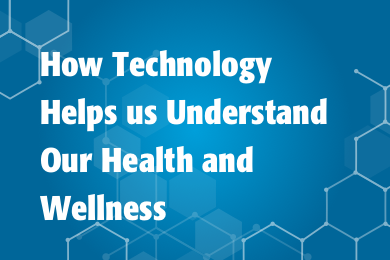October 24, 2024
For all the promise of electric vehicles, the path to widespread adoption remains filled with roadblocks — from charging deserts to the environmental impact of lithium batteries. As technology races to catch up, researchers are turning to alternative battery chemistries and innovative materials to ensure EVs live up to their green reputation.
“The development of electric vehicles is advancing, but some aspects still need to be considered, such as the cost involved, waste generated and road infrastructure,” said IEEE Senior Member Cristiane Agra Pimentel. “Despite bringing benefits such as reduced use of carbon-based fuels and less noise, this transition will be faster in developed countries.”
Fortunately, researchers are working on solutions that could take the industry to the next level in the coming years.
Expanding Charging Networks
One factor holding electric vehicles back in many regions is a lack of charging infrastructure. It’s not just that there aren’t enough charging stations. Some countries span huge territories. The construction of charging stations in rural areas may require upgrades to local electrical infrastructure.
“Electric vehicles are a viable option in densely populated countries where travel distances are shorter, like Europe, Japan and South Korea,” said IEEE Senior Member Euclides Chuma. “Countries with large territorial dimensions, such as the USA, Brazil and China, will take longer to install the charging infrastructure, as it will often be necessary to upgrade the electricity transmission lines as well.”
How long will a full buildout take? Estimates range from five to 15 years.
Making Batteries Better
Another research focus involves squeezing more energy out of existing batteries.
Lithium batteries have improved significantly over the past 15 years. In 2008, the amount of energy in a lithium battery stood at 55 watt-hours per liter (Wh/L). By 2020, that figure had hit 450 Wh/L, according to the U.S. Department of Energy. Today’s lithium-ion batteries pack even more energy into the same amount of space: 750 Wh/L. That improvement is significant. A lithium-ion battery today can hold 13 times more energy than a battery of the same size from 2008.
Making Better Batteries
Using lithium in batteries has significant drawbacks though, including the environmental challenges related to lithium mining. It’s also pretty expensive, accounting for about 40% of the cost of an electric vehicle.
That’s pushed automakers to look for batteries made from other materials — what the industry calls “alternative battery chemistries.” The goal is to find an abundant material that is both less expensive than lithium, easier to extract from the earth and promises good energy density.
One candidate is sodium-ion batteries. Sodium is abundant and is found in sodium chloride or table salt. It’s also relatively inexpensive. But it might take a while before sodium-ion batteries become commonplace. The lithium battery industry has well-developed supply chains that make it easy for companies to use them.
Battery Recycling
Despite the high demand for lithium, very few lithium batteries are recycled, partly because the cost of recycling often exceeds the value of the raw materials.
Finding cost-effective ways to recycle lithium batteries is crucial because many lithium batteries used in EVs and smartphones end up in landfills. On the other hand, cost-effective recycling could reduce the overall cost of batteries, reduce the environmental damage associated with lithium mining and encourage more electrification.
Learn More: The IEEE Learning Network has established several courses on EV technology, including this one that focuses on battery technology, fuel cells, and electric drive trains.





 Meaningful Momentum or Running in Place?
Meaningful Momentum or Running in Place? AI Through Our Ages
AI Through Our Ages Liquid Infrastructure: Our Planet's Most Precious Resource
Liquid Infrastructure: Our Planet's Most Precious Resource The Impact of Technology in 2025
The Impact of Technology in 2025 Quantum and AI: Safeguards or Threats to Cybersecurity?
Quantum and AI: Safeguards or Threats to Cybersecurity? Why AI Can't Live Without Us
Why AI Can't Live Without Us Bits, Bytes, Buildings and Bridges: Digital-Driven Infrastructure
Bits, Bytes, Buildings and Bridges: Digital-Driven Infrastructure Impact of Technology in 2024
Impact of Technology in 2024 Emerging AI Cybersecurity Challenges and Solutions
Emerging AI Cybersecurity Challenges and Solutions The Skies are Unlimited
The Skies are Unlimited Smart Cities 2030: How Tech is Reshaping Urbanscapes
Smart Cities 2030: How Tech is Reshaping Urbanscapes Impact of Technology 2023
Impact of Technology 2023 Cybersecurity for Life-Changing Innovations
Cybersecurity for Life-Changing Innovations Smarter Wearables Healthier Life
Smarter Wearables Healthier Life Infrastructure In Motion
Infrastructure In Motion The Impact of Tech in 2022 and Beyond
The Impact of Tech in 2022 and Beyond Cybersecurity, Technology and Protecting Our World
Cybersecurity, Technology and Protecting Our World How Technology Helps us Understand Our Health and Wellness
How Technology Helps us Understand Our Health and Wellness The Resilience of Humanity
The Resilience of Humanity Harnessing and Sustaining our Natural Resources
Harnessing and Sustaining our Natural Resources Creating Healthy Spaces Through Technology
Creating Healthy Spaces Through Technology Exceptional Infrastructure Challenges, Technology and Humanity
Exceptional Infrastructure Challenges, Technology and Humanity The Global Impact of IEEE's 802 Standards
The Global Impact of IEEE's 802 Standards Scenes of our Cyber Lives: The Security Threats and Technology Solutions Protecting Us
Scenes of our Cyber Lives: The Security Threats and Technology Solutions Protecting Us How Millennial Parents are Embracing Health and Wellness Technologies for Their Generation Alpha Kids
How Millennial Parents are Embracing Health and Wellness Technologies for Their Generation Alpha Kids Space Exploration, Technology and Our Lives
Space Exploration, Technology and Our Lives Global Innovation and the Environment
Global Innovation and the Environment How Technology, Privacy and Security are Changing Each Other (And Us)
How Technology, Privacy and Security are Changing Each Other (And Us) Find us in booth 31506, LVCC South Hall 3 and experience the Technology Moon Walk
Find us in booth 31506, LVCC South Hall 3 and experience the Technology Moon Walk Virtual and Mixed Reality
Virtual and Mixed Reality How Robots are Improving our Health
How Robots are Improving our Health IEEE Experts and the Robots They are Teaching
IEEE Experts and the Robots They are Teaching See how millennial parents around the world see AI impacting the lives of their tech-infused offspring
See how millennial parents around the world see AI impacting the lives of their tech-infused offspring Take the journey from farm to table and learn how IoT will help us reach the rising demand for food production
Take the journey from farm to table and learn how IoT will help us reach the rising demand for food production Watch technical experts discuss the latest cyber threats
Watch technical experts discuss the latest cyber threats Explore how researchers, teachers, explorers, healthcare and medical professionals use immersive technologies
Explore how researchers, teachers, explorers, healthcare and medical professionals use immersive technologies Follow the timeline to see how Generation AI will be impacted by technology
Follow the timeline to see how Generation AI will be impacted by technology Learn how your IoT data can be used by experiencing a day in a connected life
Learn how your IoT data can be used by experiencing a day in a connected life Listen to technical experts discuss the biggest security threats today
Listen to technical experts discuss the biggest security threats today See how tech has influenced and evolved with the Games
See how tech has influenced and evolved with the Games Enter our virtual home to explore the IoT (Internet of Things) technologies
Enter our virtual home to explore the IoT (Internet of Things) technologies Explore an interactive map showcasing exciting innovations in robotics
Explore an interactive map showcasing exciting innovations in robotics Interactively explore A.I. in recent Hollywood movies
Interactively explore A.I. in recent Hollywood movies Get immersed in technologies that will improve patients' lives
Get immersed in technologies that will improve patients' lives